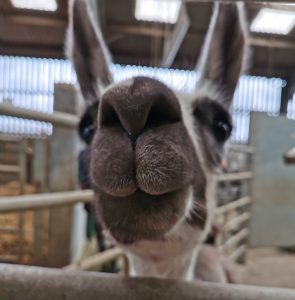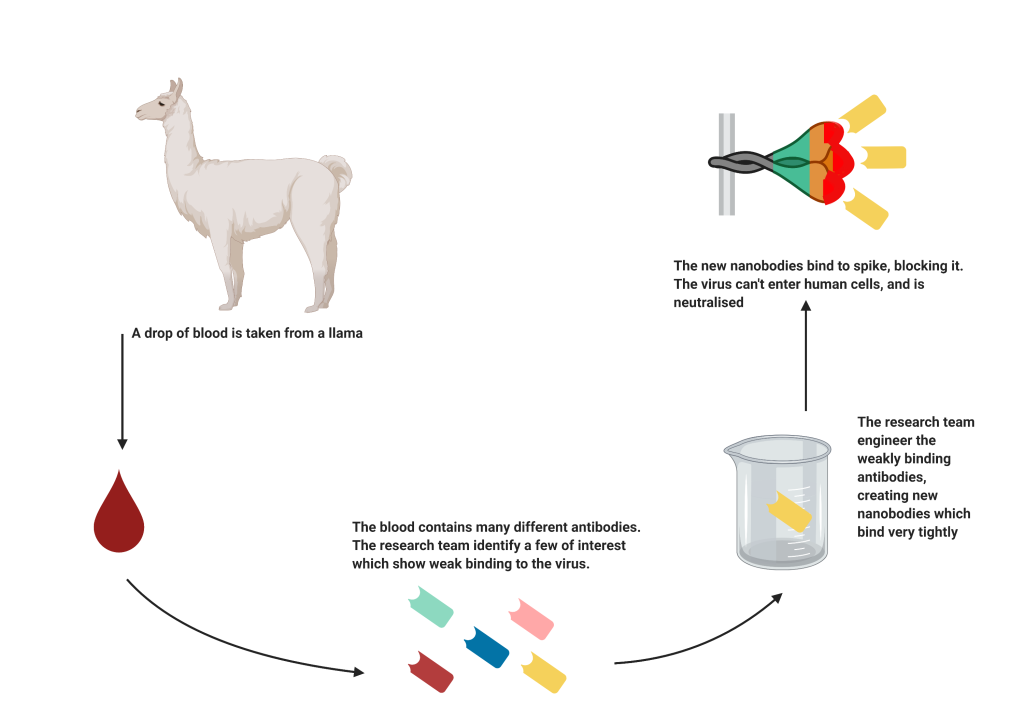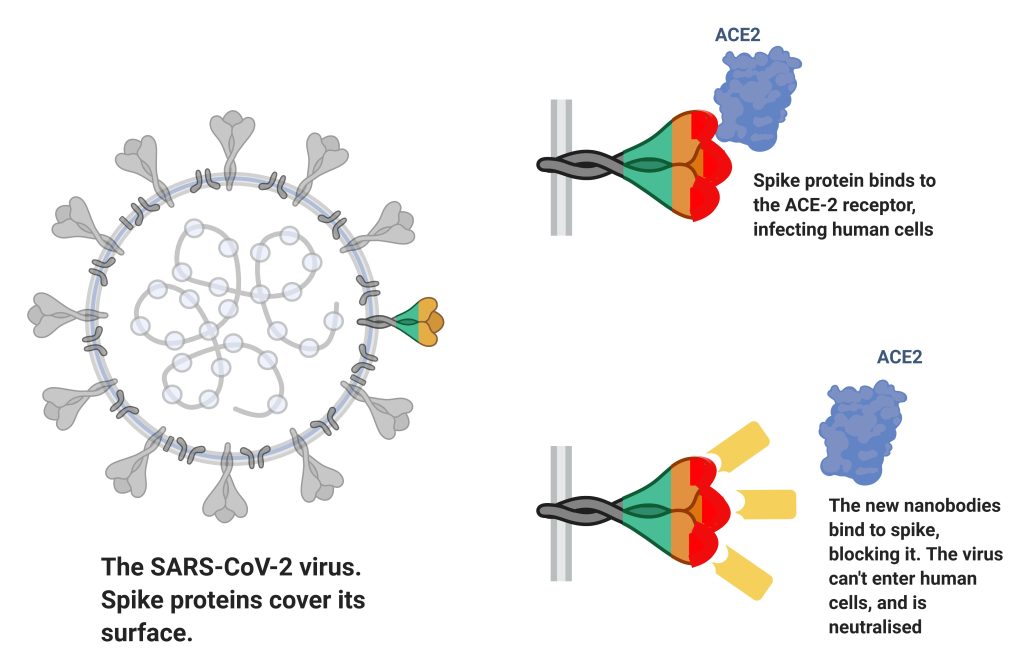 As part of the Royal Society Summer Science Exhibition 2022, scientists from the Rosalind Franklin Institute and the University of Reading will be explaining how they are working with llamas including Fifi to help us fight viruses, such as Covid-19.
As part of the Royal Society Summer Science Exhibition 2022, scientists from the Rosalind Franklin Institute and the University of Reading will be explaining how they are working with llamas including Fifi to help us fight viruses, such as Covid-19.
How can llamas help us fight viruses?
All animals, including humans, produce antibodies to help us recognise and fight off viruses that cause diseases such as COVID-19. Antibodies bind to the viruses and stop them from entering the cell, reproducing and making us ill as a result.
us recognise and fight off viruses that cause diseases such as COVID-19. Antibodies bind to the viruses and stop them from entering the cell, reproducing and making us ill as a result.
Llamas make a unique type of antibody from which a miniature antibody, called a nanobody, that can be engineered. Nanobodies are very useful to scientists as they are much smaller and easier to change than normal antibodies, and are easier to grow in labs.
Scientists inject a llama with a small part of a virus, just like when you are given a vaccine. The llama’s immune system then starts to react and make antibodies which will attack the intruder. Vaccination of the llama does not make the animal sick.
A few weeks later, a small blood sample is taken from the llama. The scientists take the nanobodies out of the blood and test how effective they are at neutralising the virus.
The nanobodies can be altered in the lab to make them even more effective at binding to and stopping the virus.

Hong Lin, senior research technician at University of Reading, is responsible for managing the llama immunisations. She explains more about the process and her role in the below video:
How can we use nanobodies to develop fight viruses?
Our scientists have used this process to create nanobodies which could be used to fight COVID-19. The nanobodies they produced strongly bind to the SARS-CoV-2 virus spike protein. It is the spike protein that binds to our cells and allows the virus to replicate. When the nanobodies are bound to the spike protein the virus cannot bind to our cells and the virus is stopped from reproducing.

What other diseases could nanobodies help with in the future?
There is still much work to be done but if they prove to be effective in human trials then nanobodies may be used to develop a treatment for a whole host of viruses, including new ones that emerge in the future. Recent studies from other scientists have also indicated that nanobodies are a versatile tool, which could be used to help treat asthma, cancers and other diseases.
As part of the exhibition, we are running a competition to meet Fifi the llama at the University of Reading farm, read the terms and conditions of the competition here.
This exhibit was produced in collaboration with:
![]()